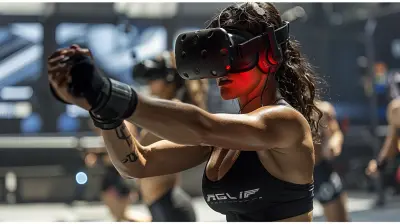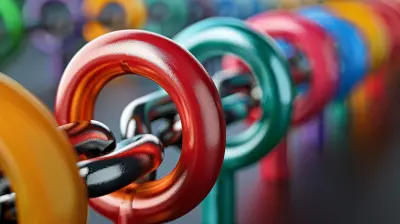Wearable Devices for Sleep Tracking: Rest Better, Feel Better
21 October 2025
Who doesn’t love the feeling of waking up well-rested, refreshed, and ready to conquer the day? But let’s be real—how often does that actually happen? In today’s fast-paced world, quality sleep can feel like a distant dream for many of us. We're spending more time glued to our screens, juggling work, relationships, and everything in between. It’s no wonder sleep often takes a back seat.
Enter wearable devices for sleep tracking. These nifty gadgets aim to turn that around, helping you monitor your sleep patterns, and offering insights so you can make changes to rest better and ultimately feel better. But what are these devices? How exactly do they help? And most importantly, are they worth the investment?
Let’s dive in.
![]()
What Are Wearable Sleep Trackers?
Wearable sleep trackers are devices you wear on your wrist, clip onto your clothing, or even insert under your mattress. They collect data while you sleep, offering insights into the different stages of your sleep cycle—light, deep, and REM sleep.Some more advanced wearables can also track your heart rate, breathing patterns, movement, and even blood oxygen levels. Based on this data, they provide feedback and suggestions on how to improve your sleep quality.
It’s like having a mini sleep lab, but without all those weird wires and electrodes!
How Do Wearable Sleep Trackers Work?
Most sleep trackers rely on a combination of sensors to gather data. These sensors monitor your body’s movements (via accelerometers), heart rate (through optical sensors), and sometimes even your skin temperature. By analyzing this information, the device can make educated guesses about when you’re in light sleep, deep sleep, REM sleep, or when you're tossing and turning.For example, if your heart rate dips and you’re lying still, the tracker might conclude you're in deep sleep. If your heart rate starts fluctuating and you're moving a bit, it might assume you're in REM sleep, which is when most of our dreaming happens.
Yes, it’s a bit of a guessing game, but advances in technology have made these devices surprisingly accurate.
![]()
Benefits of Using Wearable Devices for Sleep Tracking
1. Understand Your Sleep Patterns
Let’s be honest, most of us have no idea what happens once our head hits the pillow. Are we light sleepers? Do we wake up multiple times without realizing it? Wearable trackers can answer these questions by breaking down your sleep into various stages.This kind of insight is invaluable because if you know what's wrong, you can take steps to fix it. Maybe you’re spending too much time in light sleep and not enough in deep sleep. Or perhaps you’re waking up more times during the night than you thought.
2. Create Better Sleep Habits
Knowledge is power. Once you’re aware of your sleep habits, you can start making changes. Many wearable sleep trackers provide daily, weekly, or monthly reports, allowing you to spot trends. For example, maybe you sleep better on weekends when you're more relaxed, or perhaps your sleep quality dips after certain meals.Beyond that, many wearables offer suggestions on how to improve your sleep habits. This could be anything from changing your bedtime routine, adjusting your sleep environment, or cutting back on that late-night Netflix binge.
3. Track Your Daily Recovery
Some wearables—like the WHOOP Strap or the Oura Ring—go beyond just tracking your sleep. They also measure how well your body is recovering from the previous day's activities. This is especially useful for athletes or anyone with a physically demanding lifestyle.By knowing how recovered your body is, you can adjust your workout intensity or rest days to avoid overtraining or burnout.
4. Detect Potential Sleep Disorders
While wearable sleep trackers aren’t a replacement for a sleep study, they can help detect irregularities that might point to sleep disorders like sleep apnea. Some devices offer features like tracking your blood oxygen levels or monitoring for signs of snoring. While they won’t give you a diagnosis, they can provide valuable data that you can share with your doctor.5. Improve Your Overall Health
A good night’s sleep is the foundation of good health. Poor sleep has been linked to a number of health issues—everything from weight gain and weakened immunity to heart disease and depression. By improving your sleep, you’re improving your overall well-being. A wearable sleep tracker can help you get there by offering personalized insights and recommendations.![]()
Popular Wearable Sleep Trackers on the Market
Now that you know why wearable sleep trackers are beneficial, let’s take a look at some of the most popular options available today.1. Fitbit Charge 5
Fitbit has been a major player in the wearable tech space for years, and the Charge 5 is one of their best offerings for sleep tracking. It monitors your heart rate, SpO2 levels (that’s blood oxygen, for those who don’t speak science), and gives you a Sleep Score based on how long you spent in different sleep stages.Plus, it syncs with the Fitbit app to give you personalized tips on improving your sleep. Who doesn’t love a little coaching?
2. Oura Ring
The Oura Ring is a sleek, discreet option for those who don’t want to wear something on their wrist at night. It tracks your heart rate, body temperature, and movements to provide detailed sleep insights. It also gives you a “Readiness Score” to help you gauge how well your body is recovering from daily stress.Athletes and biohackers love the Oura Ring for its accuracy and comfort. And, let’s face it, it’s much cooler than wearing a bulky wristband.
3. WHOOP Strap 4.0
The WHOOP Strap doesn’t have a screen, and it’s not your typical fitness tracker. Instead, it’s all about recovery and performance. It tracks your sleep, heart rate variability (HRV), and strain to provide detailed data on how well your body is recovering and what kind of strain you can handle for the day.This makes it a great option for athletes or anyone who wants to optimize their performance and recovery. However, it requires a monthly subscription, so keep that in mind.
4. Apple Watch Series 8
The Apple Watch Series 8 isn’t just a fitness tracker—it’s an all-around health gadget. While Apple’s sleep tracking isn’t as detailed as some competitors, it still offers a solid overview of your sleep patterns, including time spent in different stages. Plus, with the recent addition of blood oxygen monitoring and heart rate tracking, it’s a great option for those who want a multi-functional device.5. Garmin Venu 2
Garmin is known for its GPS and fitness devices, but the Venu 2 also excels in sleep tracking. It offers detailed insights into your sleep stages, heart rate, and even measures your body’s “battery” level (aka how well you’re recovering). With its long battery life and fitness-focused features, it’s a great option for athletes and outdoor enthusiasts.![]()
Are Wearable Sleep Trackers Accurate?
This is the million-dollar question, isn’t it? While wearable sleep trackers have come a long way, they’re not perfect. Most devices rely on movement and heart rate data to estimate your sleep stages, which isn’t as accurate as the equipment used in a sleep lab.That being said, for most people, wearable sleep trackers are good enough. They can give you a general idea of your sleep patterns and help you spot trends over time. And, let’s be honest, it’s not like you’re going to hook yourself up to a bunch of wires every night in the name of perfect data. These devices offer a convenient and fairly accurate snapshot of your sleep, which is more than most of us had before.
Tips for Getting the Most Out of Your Wearable Sleep Tracker
Now that you have a good understanding of what wearable sleep trackers are and how they work, here are some tips to get the most out of yours:1. Consistency is Key
Wear your tracker every night for the most accurate data. The more nights you track, the clearer picture you’ll get of your sleep habits.2. Pay Attention to Trends
Don’t get too hung up on one night’s data. Instead, look for patterns over a week or month. This will give you a better sense of what’s working and what needs improvement.3. Use the Data to Make Changes
What good is all that data if you’re not using it? If your tracker suggests you’re not getting enough deep sleep, try experimenting with your bedtime routine or adjusting your room’s temperature. Small changes can make a big difference.4. Don’t Obsess Over the Numbers
While it’s great to have data, don’t let it stress you out. Sleep is supposed to be relaxing, after all! Use the tracker as a tool to improve your sleep, but don’t let it dictate your every move.
Conclusion
Wearable devices for sleep tracking offer an easy and convenient way to gain insights into your sleep patterns and habits. Whether you're an athlete looking to optimize recovery or just someone who wants to feel more rested, these gadgets can provide valuable data to help you make informed decisions about your sleep.While they’re not a replacement for professional sleep studies, wearable trackers offer a great starting point for anyone looking to improve their sleep quality. So, if you're tired of feeling tired, it might be time to give these devices a try.
all images in this post were generated using AI tools
Category:
Wearable DevicesAuthor:

Michael Robinson
Discussion
rate this article
1 comments
Astraea Miller
How accurate are these devices in tracking sleep quality?
October 24, 2025 at 4:16 AM

Michael Robinson
Wearable devices can provide a general estimate of sleep quality, but their accuracy varies. They are best used for tracking trends over time rather than for precise measurements.


